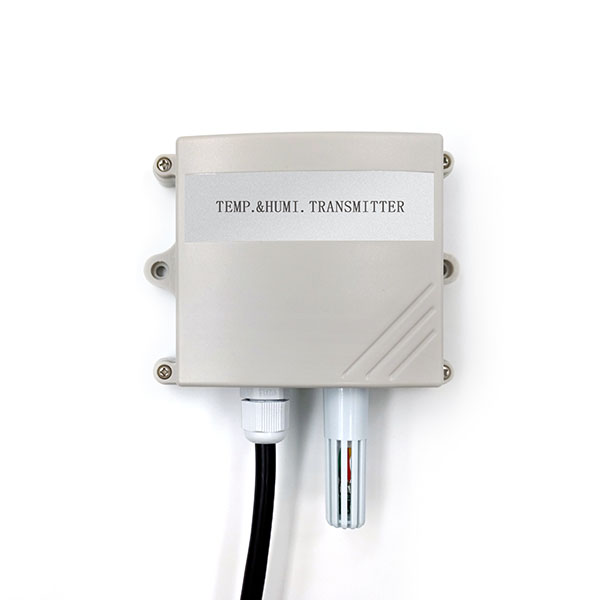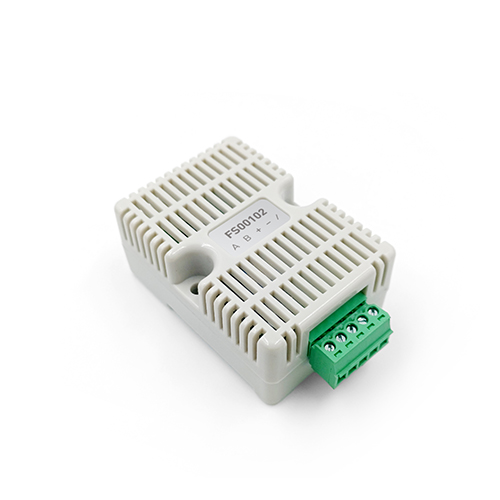Air quality temperature and humidity sensor
According to research by physiologists, the temperature and humidity of a person’s environment will directly affect the person’s body temperature regulation function and heat conduction effect. So that the quality of human somatosensory adaptation reflects the agility of thinking activities and the excellent mental state, thus affecting the efficiency of our learning and work. After experimental analysis, the most suitable room temperature for the human body should be 18°C, and the humidity should be 40% to 60%. In people’s production and life, there are many different places and environments that have specific requirements for temperature and humidity. Therefore, Air quality temperature and humidity sensor has become a necessary means.
Air quality temperature and humidity sensor selection
Since temperature and humidity are closely related both in terms of physical quantities themselves and in actual people’s lives, a sensor integrating temperature and humidity has been produced.
Air quality temperature and humidity sensor refers to equipment or devices that can convert temperature and humidity quantities into electrical signals that can be easily measured and processed. Temperature and humidity sensors on the market generally measure temperature and relative humidity.
Air quality temperature and humidity sensor selection
There are following things to pay attention to when choosing Air quality temperature and humidity sensor:
①Select measurement range
Just like measuring weight and temperature, when choosing a humidity sensor, you must first determine the measurement range. Except for meteorological and scientific research departments, those engaged in temperature and humidity measurement and control generally do not need full humidity range (0-100%RH) measurement.
②Select measurement accuracy
Measurement accuracy is the most important indicator of a humidity sensor. Every percentage point increase means the humidity sensor reaches a higher level, or even a higher grade. Because to achieve different precisions, their manufacturing costs vary greatly, and their selling prices also vary greatly. Therefore, users should not blindly pursue “high, precise and cutting-edge”. If the humidity sensor is used at different temperatures, the influence of temperature drift should also be considered on its indication value.
It is well known that relative humidity is a function of temperature, and temperature strongly affects relative humidity in a given space. Every time the temperature changes by 0.1°C. A humidity change (error) of 0.5%RH will occur. If it is difficult to maintain a constant temperature in the usage situation, it is inappropriate to propose too high humidity measurement accuracy. In most cases, if there is no precise temperature control method, or the measured space is not sealed, an accuracy of ±5%RH is sufficient.
For local spaces that require precise control of constant temperature and humidity, or where humidity changes need to be tracked and recorded at any time, choose a humidity sensor with an accuracy of ±3% RH or above. The requirement of accuracy higher than ±2%RH may be difficult to achieve even with the standard humidity generator used to calibrate the sensor, let alone the sensor itself. For relative humidity measuring instruments, it is still very difficult to achieve an accuracy of 2%RH even at 20-25°C. Usually the characteristics given in the product data are measured at normal temperature (20℃±10℃) and in clean gas.
③Consider time drift and temperature drift
In actual use, due to the influence of dust, oil and harmful gases, the electronic temperature and humidity sensor will age and the accuracy will decrease over time. The annual drift of the electronic humidity sensor is generally around ±2%, or even more high. Under normal circumstances, the manufacturer will indicate that the effective use time of a calibration is 1 or 2 years, and recalibration is required upon expiration.
④Other precautions
The temperature and humidity sensor is not sealed. In order to protect the accuracy and stability of the measurement, use in acidic, alkaline and organic solvent-containing atmospheres should be avoided. Also avoid use in dusty environments.
In order to accurately reflect the humidity of the space to be measured, you should also avoid placing the sensor too close to the wall or in a dead corner with poor air circulation. If the room being measured is too large, multiple sensors should be placed.
Some temperature and humidity sensors have relatively high power supply requirements, otherwise the measurement accuracy will be affected. Or the sensors interfere with each other and even fail to work. When using, a suitable power supply that meets accuracy requirements should be provided in accordance with technical requirements.
When the sensor needs to transmit signals over long distances, attention should be paid to signal attenuation. When the transmission distance exceeds 200m, it is recommended to use a temperature and humidity sensor with current output signal.








